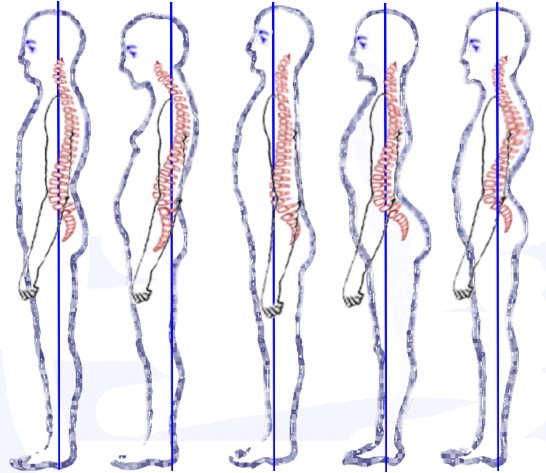Mom often told us to “stand up straight.” (Did she ever explain how to do it though?)Look around you and you’ll see some spectacularly “bad” posture. Slumped spines are all around us.
How important is posture with regard to pain? For a long time, various schools of thought have insisted that poor posture causes back pain, neck pain, shoulder pain and all sorts of other ailments. The fact is though posture and pain don’t really correlate all that well. Research by pain scientists have observed the following:
- people in pain showing poor posture
- people in pain showing good posture
- people without pain in good posture
- people without pain in bad posture
So we see that posture really isn’t strongly linked directly to pain. Further, we can’t really tell the chickens from the eggs: Did poor posture bring pain or did pain bring on poor posture. Or maybe we see both poor posture and pain in someone yet they really don’t have anything to do with each other. Sort of like hair and headaches. We often see them both in the same person yet we know they don’t really have anything to do with the other.
Todd Hargrove at BetterMovement.com wrote a great post on all of this called Back Pain Myths: Posture, Core Strength, Bulging Discs. He writes the following:
“In one study, researchers looked at the posture of teenagers and then tracked who developed back pain in adulthood. Teenagers with postural asymmetry, thoracic kyphosis (chest slumping) and lumbar lordosis (overly arched low lack) were no more likely to develop back pain than others with “better” posture.
Another study looked at increases in low back curve and pelvic angle due to pregnancy. The women with more postural distortion were no more likely to have back pain during the pregnancy. A systematic review of more than fifty four studies found no good evidence of a correlation between posture and pain. Leg length inequality seems to have no effect on back pain unless it is more than 20 mm (the average leg length difference is 5.2 mm). Hamstring and psoas tightness do not predict back pain.
These results are particularly striking given that many studies have quite easily found other factors that correlate well with low back pain, such as exercise, job satisfaction, educational level, stress, and smoking. Although some studies have found a correlation between back pain and posture, it is important to remember that correlation does not equal causation. It may be pain is causing the bad posture and not the other way around. This is a very likely possibility. People will spontaneously adopt different postural strategies when injected with a painful solution. Big surprise!”
What am I trying to say here? That posture doesn’t matter and that we should ignore it? Nope. I’ll give you some reasons to pay attention to posture:
- Proper posture while lifting makes you stronger.
- Proper lifting posture keeps you safe.
- Tall, erect posture makes you look better.
- This same tall posture makes you feel better and more confident. (Yes, the brain and posture are strongly linked!)
I’ll get into these topics in the next post.

